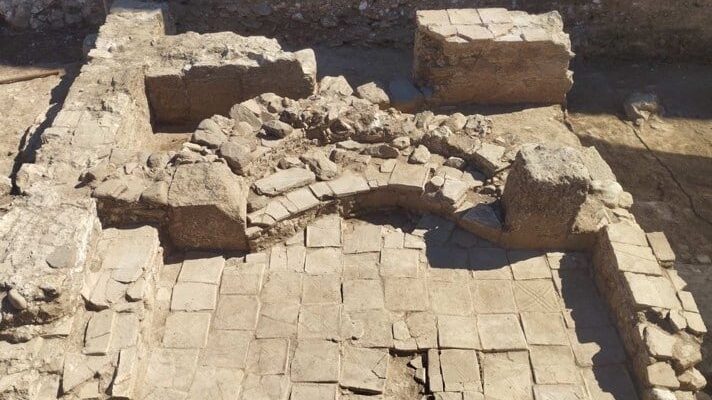
A section of an early Byzantine church, dated to the 6th century AD, was found in Oreoi, northern Evia, during excavations for a sewage network, the Ministry of Culture said on Wednesday.
The salvage excavation revealed the foundations of walls forming an apse on the ground plan, with a floor lined with bricks. The walls were constructed of rough stones, roof tiles, and clay, with a thin slip over them.
At the apse corners were two large square columns supports, with two stairs in their interior sides.
Findings at Evia’s the Byzantine Church

Two iron crosses and a bronze ring holding lamps were also found during excavation.

According to the ministry, during the 6th century, the diocese of Oreoi was one of five dioceses on Evia under the metropolis of Corinth.
The find adds significantly to the history of the era in the region, as only a few church sculptures have been found, some of them incorporated in later churches.
The church lies within the perimeter of an older public building, possibly an older basilica.
Early Byzantine churches in Greece
Churches began to appear in Greece during the early spread of Christianity in the first century AD. The apostle Paul is widely credited with introducing Christianity to Greece around 49–50 AD during his missionary journeys, as recorded in the New Testament. His efforts helped establish early Christian communities in several Greek cities
These early communities were largely informal, gathering in private homes or other meeting places.
It wasn’t until later, in the 4th century AD, that official Christian churches began to be built in Greece, following the Edict of Milan in 313 AD, which legalized Christianity in the Roman Empire under Emperor Constantine. This period marks the beginning of widespread church construction and the formal establishment of Christianity as a dominant religion in Greece.
By the 6th century, large basilicas and other Christian structures were spread throughout the region, many of which still stand today as significant historical landmarks.
The Basilica of St. Demetrios in Thessaloniki built in the 4th century AD, is one of the most important early Christian monuments in Greece and a UNESCO World Heritage site. The church was originally constructed on the site where the saint was martyred.
The Rotunda of Galerius, also in Thessaloniki, originally built as a Roman mausoleum in the early 4th century, was converted into a Christian church by Emperor Constantine. The Rotunda, also known as the Church of St. George, is one of the oldest standing Christian monuments in Greece.
Related: Magnificent Byzantine Churches in the Heart of Athens



